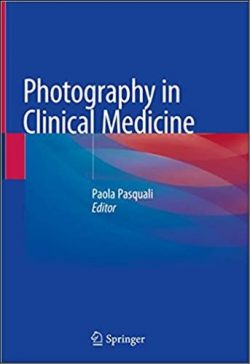Written by leading experts in the field and designed for dermatologists and residents, this book includes evidence-based medicine that underscores the clinical data, as well as practical tips on how to use both biologic and systemic agents in the field of dermatology. In the past decade, there have been several groundbreaking advances in medical dermatology. Novel biologic and systemic agents have been developed to treat inflammatory disorders, including psoriasis and atopic dermatitis, as well as skin malignancies such as melanoma.
Biologic and Systemic Agents in Dermatology encompasses these developments by describing the mechanism of action of these various agents and the clinical efficacy and safety to treating these respective disorders. The utilization of biologic and systemic agents in other dermatologic conditions, pharmacoeconomics, pharmacovigilance, and clinical trials outcomes are discussed as well as topics including tumor necrosis, conventional systemic agents for psoriatic disease, and oral agents for atopic dermatitis.
Chapter 1 – Tumor Necrosis Factor Inhibition in the Treatment of Psoriasis and Psoriatic Arthritis
Chapter 2 – Therapies Targeting Interleukin-23 in Psoriatic Disease
Chapter 3 – Interleukin 17 – Pathogenesis in Psoriatic Disease and Treatment through Selective Blockade
Chapter 4 – Conventional Systemic Agents for Psoriatic Disease
Chapter 5 – The Role of JAK Kinase Inhibitors in Psoriatic Disease and Other Dermatologic Conditions
Chapter 6 – PDE4 Inhibition in the Treatment of Psoriasis Disease and Other Skin Conditions
Chapter 7 – Miscellaneous Use of Biologic and Systemic Agents in Other Dermatologic Conditions
Chapter 8 – Targeting Interleukin 4 and Interleukin 13 in the Treatment of Atopic Dermatitis
Chapter 9 – Oral Agents for Atopic Dermatitis
Chapter 10 – Role of Intravenous Immunoglobulin in Dermatologic Disorders
Chapter 11 – Selective Targeting of CD20 on B Cells in Pemphigus Vulgaris and Other Dermatologic Diseases
Chapter 12 – Oral Systemic Agents for Various Immunobullous Disorders
Chapter 13 – Anti-IgE Therapy in Dermatology
Chapter 14 – Oral Retinoids in Dermatology
Chapter 15 – Updates in Immunotherapies for Melanoma
Chapter 16 – Sonic Hedgehog Inhibition in the Treatment of Advanced BCC
Paul S. Yamauchi, M.D., Ph.D. is Clinical Assistant Professor of Dermatology, David Geffen School of Medicine at UCLA and Harbor-UCLA Medical Center and isdermatologist in private practice at the Dermatology Institute and Skin Care Center in Santa Monica, California. Dr. Yamauchi is a fellow with the American Academy of Dermatology and the American Society of Dermatology Surgery and is also a member of the Los Angeles Metropolitan Dermatologic Society and California Society of Dermatology and Dermatologic Surgery. He is the editor-in-chief of Dermatology Reports and is the author and co-author of more than 70 publications, including several books.
Dr. Yamauchi conducts numerous clinical research trials at the Clinical Science Institute in Santa Monica and serves as a principle investigator in several studies, including new therapies for psoriasis, skin cancer, eczema and acne, and has been a consultant for the development of new innovative therapies in dermatology.
He is recognized as a key expert leader on psoriasis and has served on the Medical Board for the National Psoriasis Foundation and the Scientific Advisory Committee for the National Eczema Association. He has extensive experience using the new biologics, oral drugs, and topical medications in the treatment of psoriasis, and has been invited as a speaker at international, national, regional, and local venues to talk about new advances in the treatment of psoriasis and atopic dermatitis. In addition, he is a strong advocate in establishing patient support groups for psoriasis, and has published extensively in new advances in the treatment of psoriasis. Dr. Yamauchi has also spoken on other dermatologic conditions at national and local meetings and has published many peer-reviewed articles including acne, eczema, skin manifestations associated with rheumotologic conditions, and hyperhidrosis.
He has given several television media interviews locally in Los Angeles as well as nationally on ESPN, national news, Inside Edition, and internet webcasts. In addition, he has been quoted several times in the Los Angeles Times, Los Angeles Daily News, Dermatology Times, Skin and Allergy News, and several magazines. He has been the recipient of many awards including Marquis Who’s Who in Medicine and Healthcare, Super Doctors in Southern California, and America’s Top Physicians List among others.
Written by leading experts in the field and designed for dermatologists and residents, this book includes evidence-based medicine that underscores the clinical data, as well as practical tips on how to use both biologic and systemic agents in the field of dermatology. In the past decade, there have been several groundbreaking advances in medical dermatology. Novel biologic and systemic agents have been developed to treat inflammatory disorders, including psoriasis and atopic dermatitis, as well as skin malignancies such as melanoma.
Biologic and Systemic Agents in Dermatology encompasses these developments by describing the mechanism of action of these various agents and the clinical efficacy and safety to treating these respective disorders. The utilization of biologic and systemic agents in other dermatologic conditions, pharmacoeconomics, pharmacovigilance, and clinical trials outcomes are discussed as well as topics including tumor necrosis, conventional systemic agents for psoriatic disease, and oral agents for atopic dermatitis.
Written by leading experts in the field for dermatologists and dermatology residents
Describes the mechanism of action of various systemic and biologic agents, as well as their clinical efficacy and safety
Includes evidence-based medicine that underscores clinical data
Includes practical tips on how to use these agents
Topics covered include tumor necrosis, conventional systemic agents for psoriatic disease, and oral agents for atopic dermatitis
Written by leading experts in the field for dermatologists and dermatology residents
Describes the mechanism of action of various systemic and biologic agents, as well as their clinical efficacy and safety
Includes evidence-based medicine that underscores clinical data
Includes practical tips on how to use these agents
Topics covered include tumor necrosis, conventional systemic agents for psoriatic disease, and oral agents for atopic dermatitis





